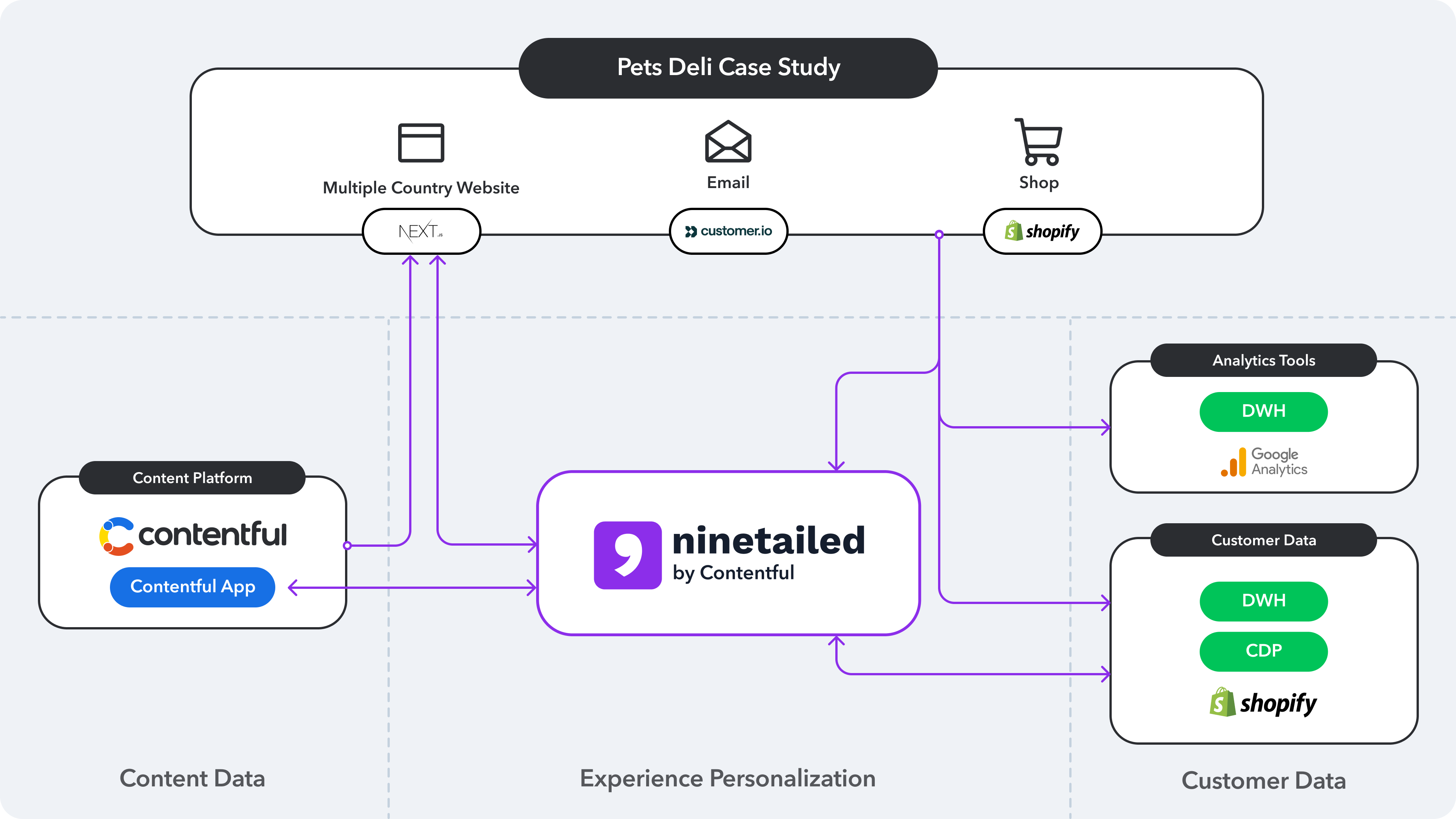
The Personalization guide
Deliver personalized ecommerce experiences

Esat Artug
Updated: February 4, 2025

The Personalization guide
- 1. What is personalization and how to get started?
- 2. Web content personalization
- 3. Extend your reach with omnichannel personalization
- 4. Deliver personalized ecommerce experiences
- 5. Hyper-personalization: The next level of personalized content
- 6. How AI personalization can level up your marketing strategy
- 7. 5 powerful benefits of personalization
This is chapter 4 of the series, The Personalization guide
Summary
An ecommerce personalization strategy elevates online shopping experiences, transforming transactional pages and forms into personalized touchpoints that delight customers with new discoveries, special offers, and targeted messaging.
Ecommerce personalization rewards customers with personalized shopping experiences based on purchase history, browsing behavior, and other customer data, resulting in increased spending and customer loyalty.
In this chapter, we’ll show you how, with the right ecommerce personalization tools (think AI native), brands can analyze customer data, predict what customers want, and deliver highly personalized shopping experiences that give customers that feeling of getting the perfect gift they didn't know they wanted.
What is ecommerce personalization?
Ecommerce personalization is the application of personalization tactics to an online shopping experience.
A basic example of ecommerce personalization is targeting new visitors with a discount on their first purchase.
To do this, you would gather customer data to determine which users are first-time visitors and target them with a special offer to encourage them to make that first purchase.
On subsequent visits, you might create personalized bestseller lists based on browsing history to encourage repeat purchases.

Ecommerce personalization makes shopping with your brand more convenient than switching to a competitor. Think about how Amazon uses browsing patterns and purchase history to deliver personalized email campaigns, recommend items as you browse, make it easy to find and reorder items you love, and notify you of price drops. Its ecommerce personalization strategy maximizes convenience, making it hard to switch.
Brands can combine ecommerce personalization with omnichannel personalization to target customers with individualized content across channels. You can also combine ecommerce personalization with customization, which allows customers to set preferences like notification frequency, default shipping preferences, subscription cadence, etc.
Ecommerce personalization success: Pets Deli increases conversions by 51%
Eight weeks before Black Friday 2021, Pets Deli approached Ninetailed with a brief to create a series of personalized campaigns for its customers. Pets Deli wanted a sophisticated campaign featuring tailored pricing for new and existing customers and eliminating the need for promo codes.

Ninetailed by Contentful rose to the challenge, and the efforts paid off: conversions increased 51%, and bounce rates dropped 10%.

Learn more about the Pets Deli campaign and how Contentful can help you accelerate your ecommerce personalization strategy.
Examples of personalization in ecommerce
Segment new and returning customers
With an ecommerce personalization strategy, online retailers can give new customers the extra information they need to build trust and make that first purchase while rewarding returning visitors with a more personalized experience.
Ecommerce personalization makes returning customers feel special and reduces the frustration of online shopping. Automatically filling in forms makes repeat purchases easier. Email and text reminders help busy customers remember to order refills.
These are small personalization efforts that help retain customers.
Loyalty programs
Customers love loyalty programs that help them save money on the products they buy. The more you personalize loyalty programs to individual customers, the harder it will be for them to give up that special treatment and start over with a new brand.
Personalized product recommendations
Sometimes customers don’t know what they want until they see it. With AI and predictive analytics, you can make recommendations in real-time, giving the customer exactly what they need.
Personalized search results
Using integrated tools like Algolia, retailers can personalize search results based on browsing behavior to better meet customer needs. Let’s say I’m browsing men’s sweaters on your website. Then I search for “men’s wool.” A standard search engine algorithm might show mittens or wool socks as the closest match, but personalized results would use my browsing history to show wool sweaters as the item I’m most likely looking for.
Cart or checkout process personalization
Remembering customer preferences, suggesting a relevant accessory, and making it easy to reorder favorite items can all make checkout a little easier for your customers and reduce cart abandonment.
Choose a composable content platform with integrated personalization capabilities
Ecommerce personalization is a must for retailers that want to succeed. Contentful offers retailers the speed and flexibility of composable commerce with integrated personalization capabilities. With Contentful, you can effortlessly combine the best commerce components for your needs, then create, test, and personalize content across any channel from a single source.
Boost your revenue with composable content and ecommerce personalization.
Up next: Hyper-personalization
Learn how hyper-personalization goes beyond traditional strategies by combining data, content, and personalization to deliver highly tailored experiences.
Written by

Esat Artug
Esat is Product Marketing Manager at Contentful and sharing his thoughts about personalization, digital experience, and composable across various channels.
